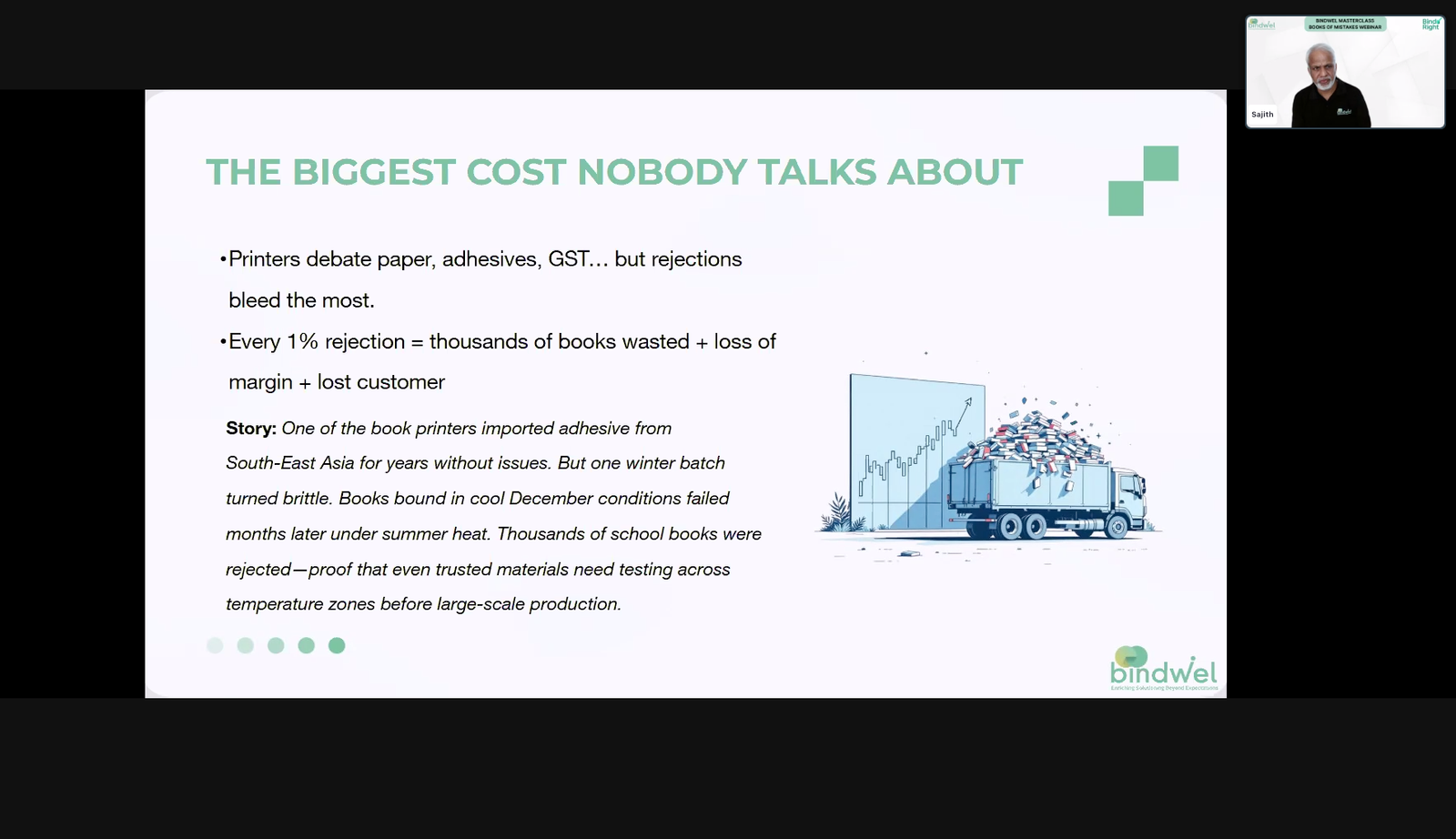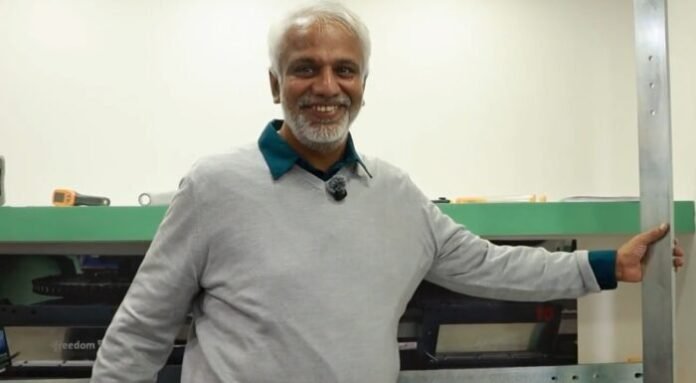Bindwel, India’s leading bookbinding technology company, hosted an interactive webinar titled ‘Books of Mistakes’. The webinar, with several polls and case studies, highlighted that book printers often refer to paper price, adhesives, GST, among other factors, as high production costs. However, the biggest hidden cost in book printing is often the truckloads of rejected books coming back.
The discussion delved into several fundamentals and failures pertaining to book rejections, such as substrate selection, lamination, handling, environment, machine maintenance, and binding faults.
Pallipuram Sajith, managing director and CEO, Bindwel, emphasized the importance of a Certificate of Analysis — a formal document issued by a manufacturer, supplier, or laboratory, confirming a product’s quality, purity, and adherence to specified standards through laboratory testing. “A Certificate of Analysis details test results and provides assurance to customers, regulators, and trading partners that the product is fit for its intended use,” he said.
Shreya Sajith, lead for engagement and growth, Bindwel, citing AVs and case studies, said every rejection hurts a printer as there’s always a risk of losing customers, damaging reputation, and draining profits. The webinar spotlighted failures and addressed why rejections happen. There were examples of root causes behind common mistakes such as spine preparation, adhesives, lamination, moisture, and standard operating procedures (SOP) errors.
The paper problem
Paper is far more reactive to its surroundings than most realize. Factors such as grain direction, humidity, and temperature can significantly impact its behavior during printing and finishing. When paper absorbs or loses moisture, it expands or contracts, often unevenly, leading to curling, misregistration, or wrinkling during the printing process.

Even a small deviation in grain direction — the alignment of fibers within a sheet — can affect how sheets fold, trim, and bind, especially in book production, where precision is critical. A mismatch in grain or slight trimming inconsistencies can compromise alignment and page integrity, resulting in entire book orders being rejected. For printers and converters, maintaining optimal pressroom conditions and close quality control is essential to avoid costly waste and delays.
Adhesive in lamination
Adhesives in lamination may be invisible to the naked eye, but their role is absolutely critical to product quality and performance. Whether in thermal or wet lamination, the success of the bond depends heavily on the surface energy of both the film and the substrate, typically paper or board.
In thermal lamination, a pre-coated film containing heat-activated adhesive is fused to the printed sheet under controlled temperature and pressure. If the surface energy of the paper is too low, or if residual coatings, inks, or silicones interfere, the adhesive fails to anchor properly, leading to delamination or blistering.
In wet lamination, where a liquid adhesive is applied between the film and paper, compatibility between the adhesive chemistry and surface properties becomes even more crucial. The adhesive must wet out the surface evenly to form a strong, uniform bond. Factors such as ink coverage, coating smoothness, and humidity all influence adhesion strength.
Even though adhesives remain unseen, they determine the durability, appearance, and tactile quality of the finished product — from glossy book covers to flexible packaging films. A poor lamination bond can mean not just visual defects but also functional failures, especially in moisture-sensitive or high-handling applications.
Why handling matters
In book production, handling matters just as much as machines. While presses, folders, and binders get much of the attention, human handling and material movement often determine whether a print job succeeds or fails. One of the most common yet overlooked causes of rejection is signature mismatch — when the folded sections of a book (signatures) are misplaced, inverted, or mixed up during gathering or binding.
Each signature in a book carries a specific page sequence, and even a single error can compromise the entire print run. Such mismatches usually occur not because of machine failure, but due to lapses in workflow management and manual handling — from stacking and transferring signatures to feeding them into the gathering line.
Environmental factors, such as humidity, can also affect how signatures behave, altering paper curl or causing static buildup, which makes them harder to handle. That’s why careful movement, labeling, and storage protocols are critical throughout the post-press process. Printers who invest in proper training, clear identification systems, and consistent quality checks minimize the risk of mix-ups and costly rejections.
Through the webinar, Sajith emphasized the necessity of corrective actions to prevent wastage and move toward a zero-rejection workflow.


















